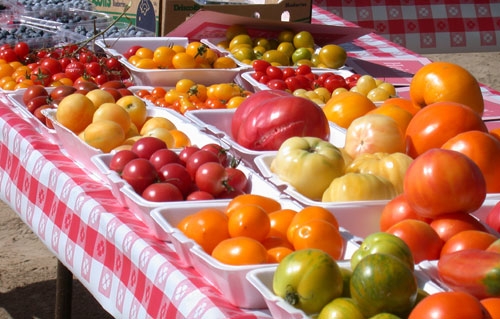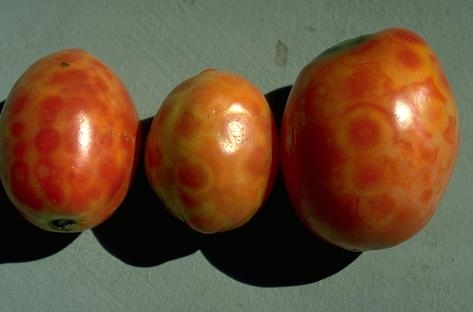
The really hard part about growing tomatoes is trying to select the variety for your location, the preferred size of your tomato fruit whether it is a small, medium or large, a paste or slicing type, red or yellow or orange or striped, or to select for plant size and growth habit, such as suitable for containers or should make the priority disease resistance? Or should you just choose whatever the nursery has in stock?
The first consideration for variety selection should be climate. There are three basic tomato growing zones in California. Zone A is the coastal area of Santa Barbara south; it includes the coastal foothills, and mountain ranges from San Diego though Marin Counties and the foothills surrounding the Central Valley, Napa and Sonoma Valleys. These areas are typified by summer daytime temperatures are warm but below 95F. Zone B are the inland valleys and high and low deserts. This area has daytime temperatures that regularly exceed 95F. Zone C are the intermediate central and northern coastal areas; cool coastal valleys from Santa Maria north to the Oregon border and include the SF Peninsula. These areas have cool to moderate summers with evening temperatures in the 45-55F. While many varieties have been evaluated for their climatic adaptations, many have not so keep that in mind when selecting your varieties. Examples of each are in the table below.
|
Zone A |
Zone B |
Zone C |
Not yet evaluated |
|
Sungold Cherry |
Sungold Cherry |
Sungold Cherry |
Brandywine |
|
Ace |
Ace |
Carmelo |
Beefmaster |
|
Better Boy |
Bush Champion determinant |
Patio Hybrid |
Lemon boy |
|
Floramerica Hybrid VFFNASt |
Floramerica Hybrid VFFNASt |
Bingo VFT |
Roma |
|
Supersteak |
Early Pick Hybrid |
Champion Hybrid VFNT |
Goliath Hybrid |
|
Early Girl Hybrid VFF |
Shady Lady |
Dona |
Green Zebra |
|
Jackpot Hybrid |
Early Bush 76 VF |
Stupice |
Green Grape |
|
Whopper Improved |
Celebrity |
Legend |
|
Next is to decide how big you want your plants to grow. Determinant or “bush” varieties are those that grow to a given size (about 3-5 ft) and bear most of their fruit within about 4-6 weeks. If you like to can your produce, a determinate variety would be best since you harvest most all the fruit in a narrow window.
Indeterminate tomato varieties grow and set fruit all summer until they are killed by the frost. This type is good if you have the room to stake or trellis them and want a continual harvest. I like to plant some of each.

For more information on tomato culture and other pest problems, download our free 10-page leaflet Growing Tomatoes in the Home Garden.